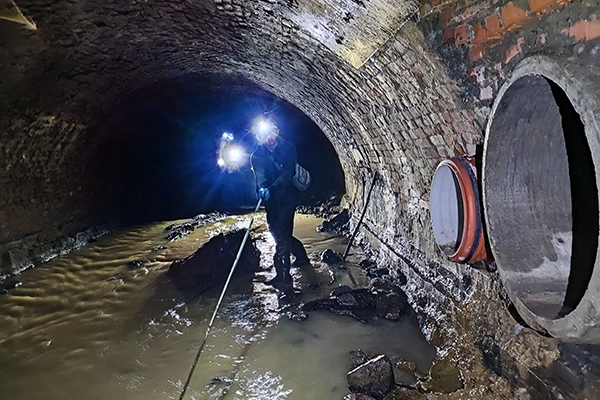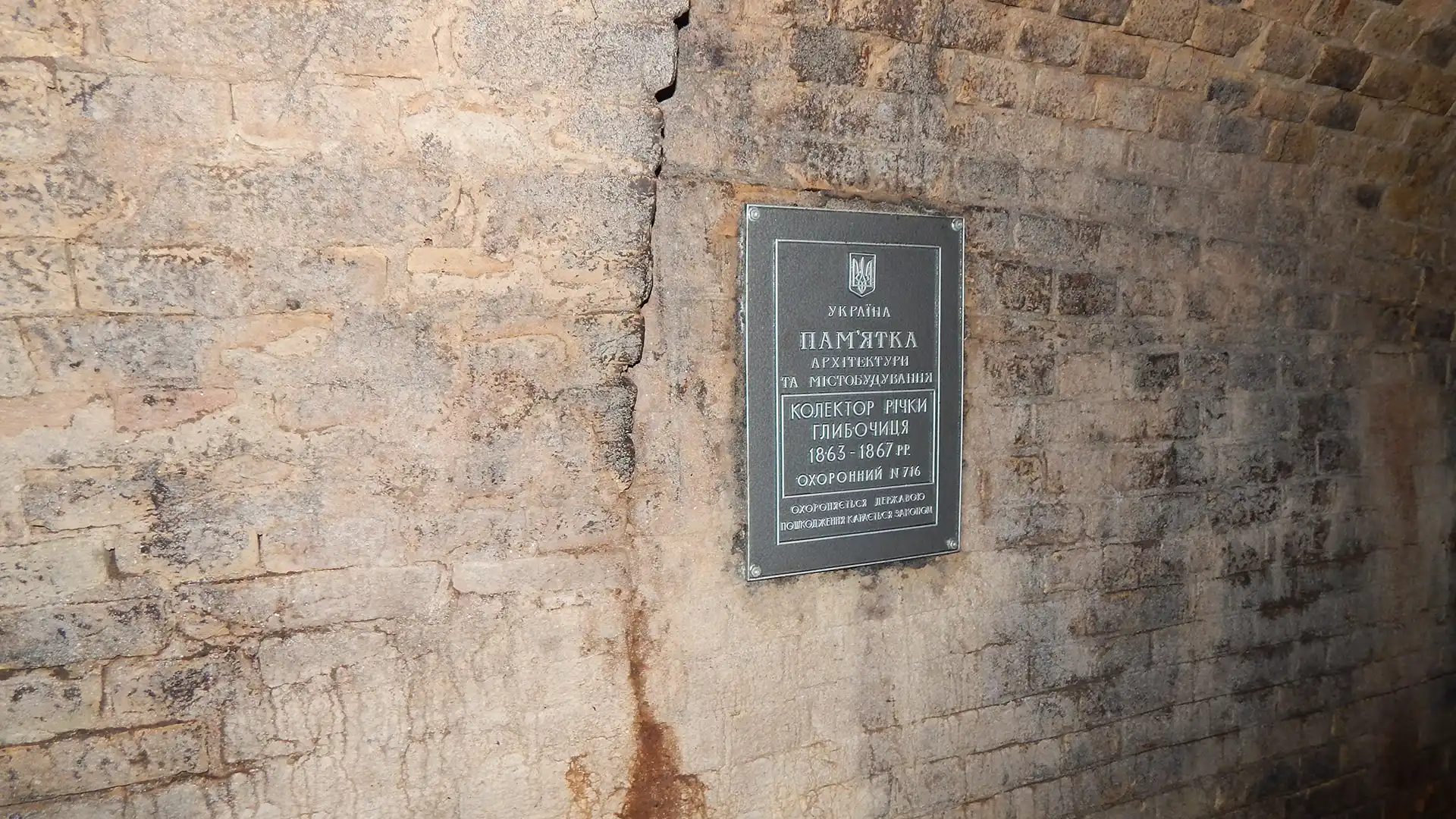
Glubochitsa Underground River and its tributary Kiyanka Creek
One of the most interesting historical collectors of Kiev is just located in the historical center. It is certainly a rather banal place for those who have long been into digging, but for me it became a discovery of 2021. Many times walking on Podol, I had no idea that under the ground is hidden a unique collector, consisting of parts built in different eras of the development of the city of Kiev.
Is it really a landmark?
And here there is a question …
According to the plate located in the collector, the security number of the object is 716, but in the State Register of Immovable Monuments of Ukraine, in the register of monuments of local importance, under this number is fixed another object located on the street Kruglouuniversitetskaya, 4 – House (the beginning of the 1890s, 1946 – 1953 years).
Therefore, my conclusion is that this plaque is a fake.
If I’m wrong and you find a mistake, write me in the comments below the video.
I’ll leave the link to the registry here:
- MCSC – https://mcsc.gov.ua/kulturna-spadshchyna/derzhavnyy-reiestr-nerukhomykh-pam-iatok-ukrainy/
- Register of monuments of local importance of Kiev – https://mcsc.gov.ua/wp-content/uploads/2025/03/m.-kyyiv-stanom-na-25.03.2025.pdf
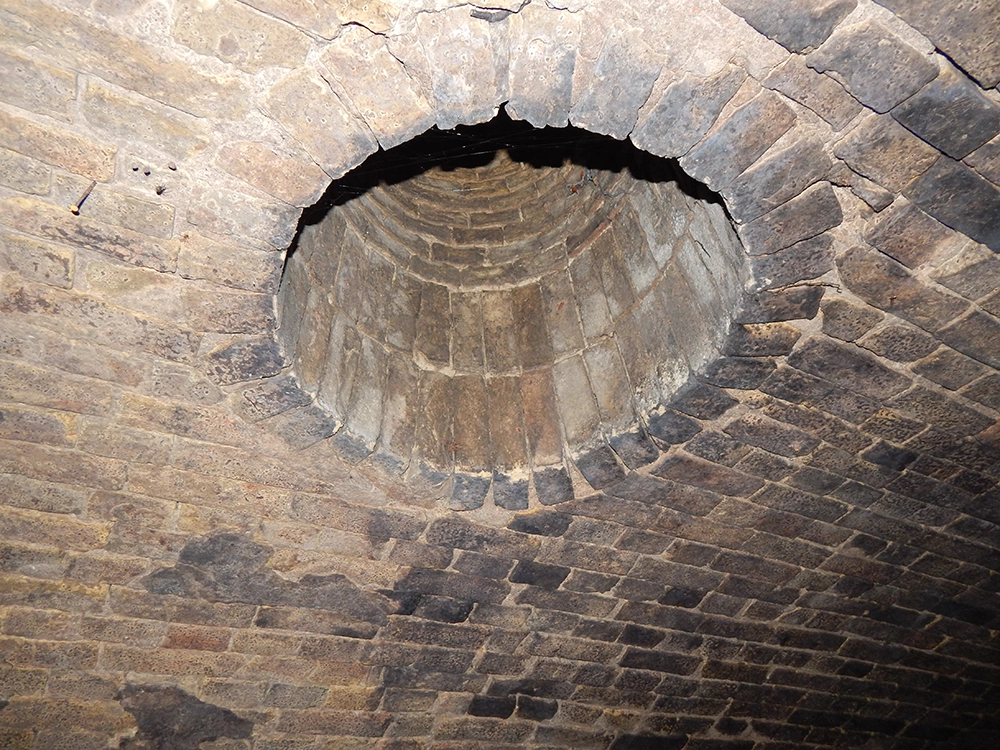

History of the Glubochitsa River
The Glubochitsa River played an important role in the formation of the urban infrastructure of Kiev, especially in the early periods of the city’s development (it was known since the times of Kievan Rus, and its tributary Kiyanka Creek is mentioned in the ancient Russian literature “The Tale of Igor’s Campaign”).
The river flowed through modern Podol and served as a natural watershed between ancient settlements. Settlements appeared along its banks, and later water mills, baths, as well as tanneries and other craft workshops were built here. The water of the river was used both for household needs and for drinking.
With the development of Kiev and population growth, the Glubochitsa River began to experience serious environmental stresses. Already by the XVIII century it was losing its original purity, and in the XIX century the situation worsened due to industrial enterprises that actively dumped waste into the water.
The Glubochitsa was turning into a sewage ditch, and frequent floods made it a threat to the city’s infrastructure. Eventually it was decided to enclose the river in underground collectors, which allowed for the expansion of development. Today the river flows underground, passing under the streets of Glubochitskaya, Verkhnyaya and Nizhnyaya Vala.
Interestingly, its bed still influences the layout of streets in this part of Kiev, and in heavy rains you can see how the water tries to return to its historical path, which is a frequent phenomenon in the daily life of Podol.
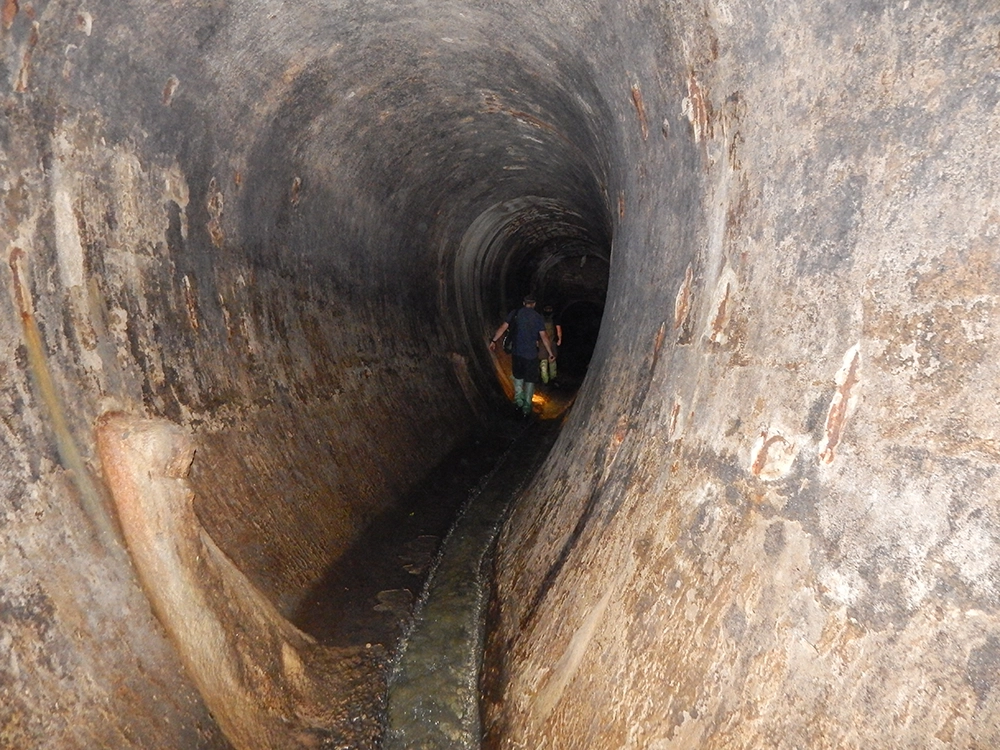

Geography and origins of the river
The Hlubochitsa River originates in the area of modern Lukyanivka, approximately near Victory Square. The river flowed through the central part of Kiev, passing through Podol and flowing into the Dnieper. Its valley was a natural boundary between the ancient Kiev hills, and its banks were covered with dense vegetation. At different times the Glubochitsa had many tributaries, including springs, which are now also hidden underground.
The current state of the river can be studied by traces of its bed: it runs under Lukyanivska, Glubochitska, Nizhny and Verkhny Val streets, crosses the area of Kontraktova Square and ends at the mouth near Havanska Square. Researchers claim that many Kiev citizens pass over it every day without suspecting its existence.
There is also a second source in the area of “Khrushchev’s Dacha”, located in the park “Nivki” between the metro stations “Nivki”, “Beresteyskaya” and “Syrets”. There are two small ponds, which flow into a concrete collector and then into a stone one. The underground channel passes under Tatarskaya and Glubochitskaya Streets in an egg-shaped tunnel, with its wide part located in the upper part of the tunnel.
Approaching Kosogorsky Lane in Podol, Glubochitsa takes in one of its tributaries – Kudryavets brook. After that it continues its way towards the Upper and Lower Val, merging with the city underground system.
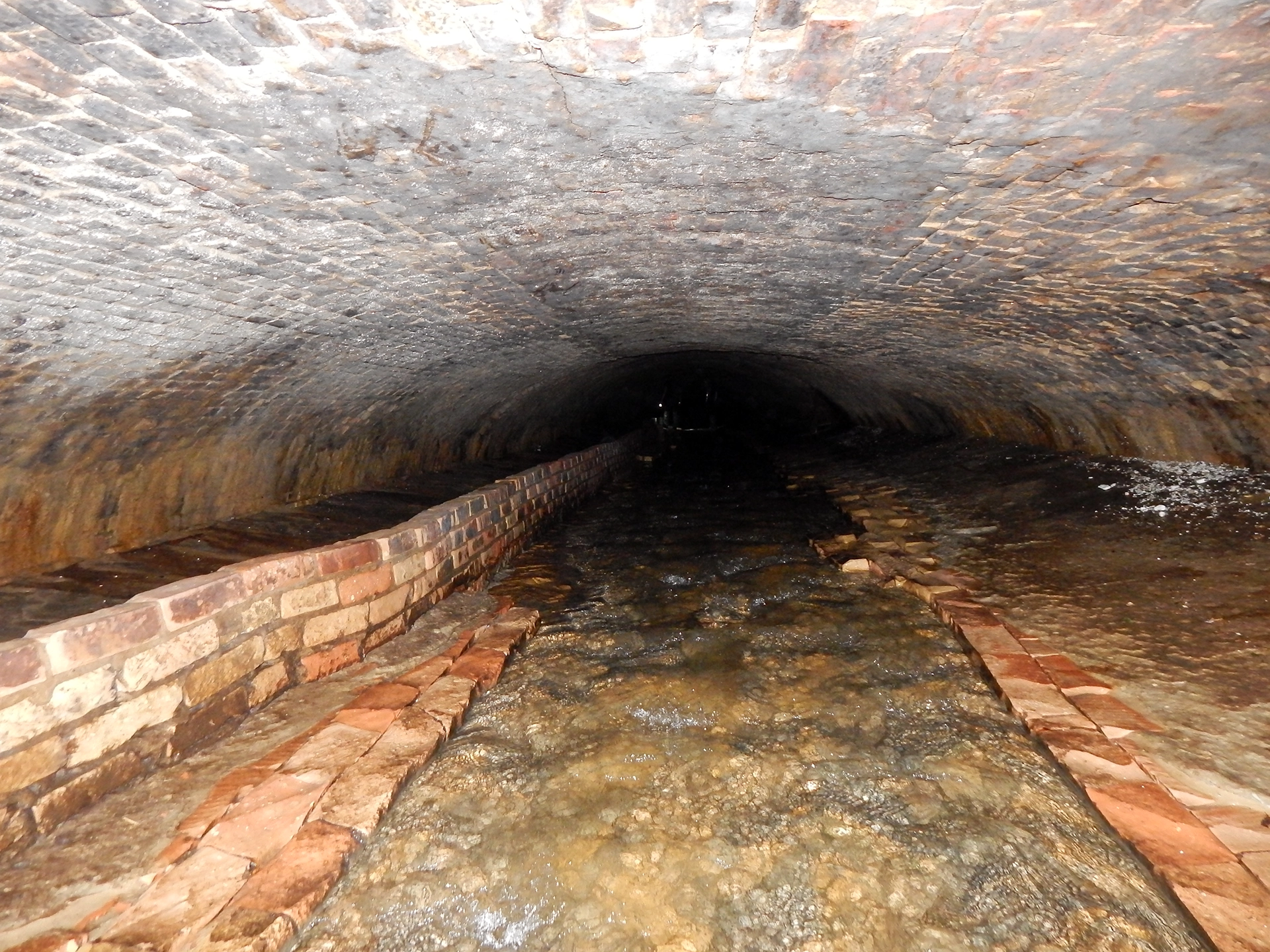
Technical data of the river and collector
- River length: about 9 km.
- Catchment area: 20 km².
- Collector depth: 2 to 7 meters in different parts of the channel.
- Collector pipe diameter: 1.5 to 4 meters.
- Water flow velocity: about 0.3 to 1 m/s (depending on precipitation).
- Maximum depth during floods: up to 2.5 meters.
Collector construction
The Glubochitsa collector was built in several stages. The first sections of the riverbed were hidden underground as early as in the middle of the 19th century, and the process was finally completed in the early 20th century. Today, the river collector is a complex system of tunnels of different diameters, through which water flows, continuing its way to the Dnieper.
Construction phases:
- XIX century (first half) – the first works on straightening and “confinement” of the river in the collector began. It was connected with the growth of the population of Kiev and the development of Podol.
- XIX century (second half) – active construction of the collector on the section from the modern Lviv Square to Podol. During this period, the river began to disappear from the surface, and its waters were directed to the storm water drainage system.
- The beginning of the XX century – continuation of straightening of the riverbed, expansion of underground channels and construction of new sections of the collector, especially in areas where there was active construction.
- Soviet period (20th century) – reconstruction and strengthening of the collector, construction of new concrete tunnels and modernization of the storm sewer system. At this time, the last open sections of Glubochitsa were underground.
- Modernity – maintenance of the collector, its partial repair and reinforcement continues, as the old brick sections are gradually deteriorating.
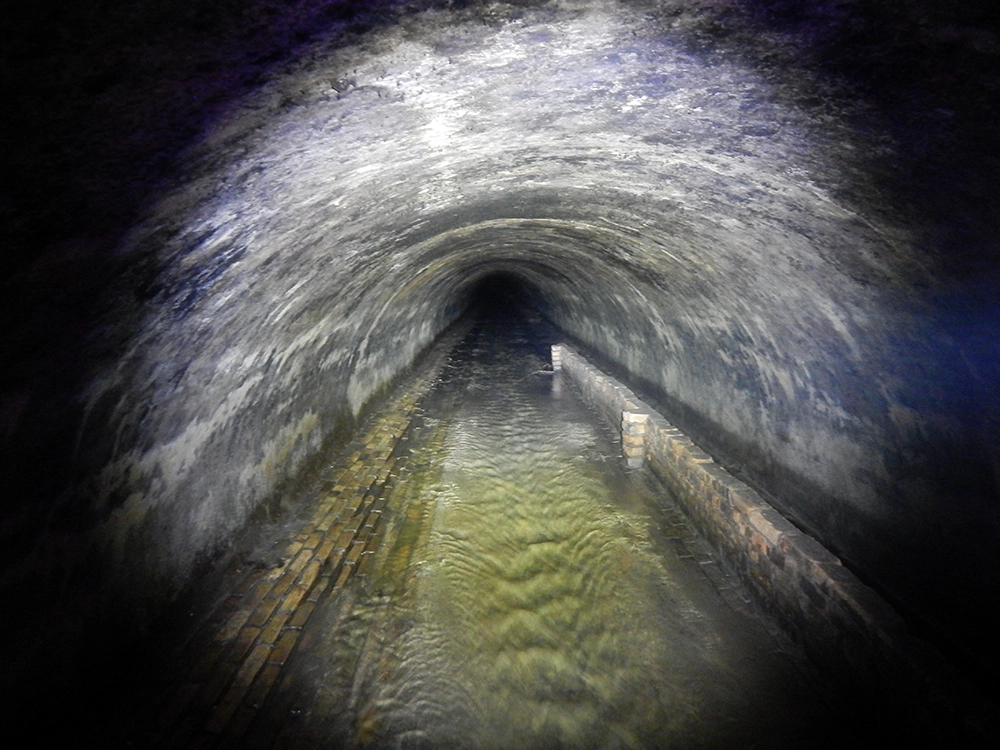
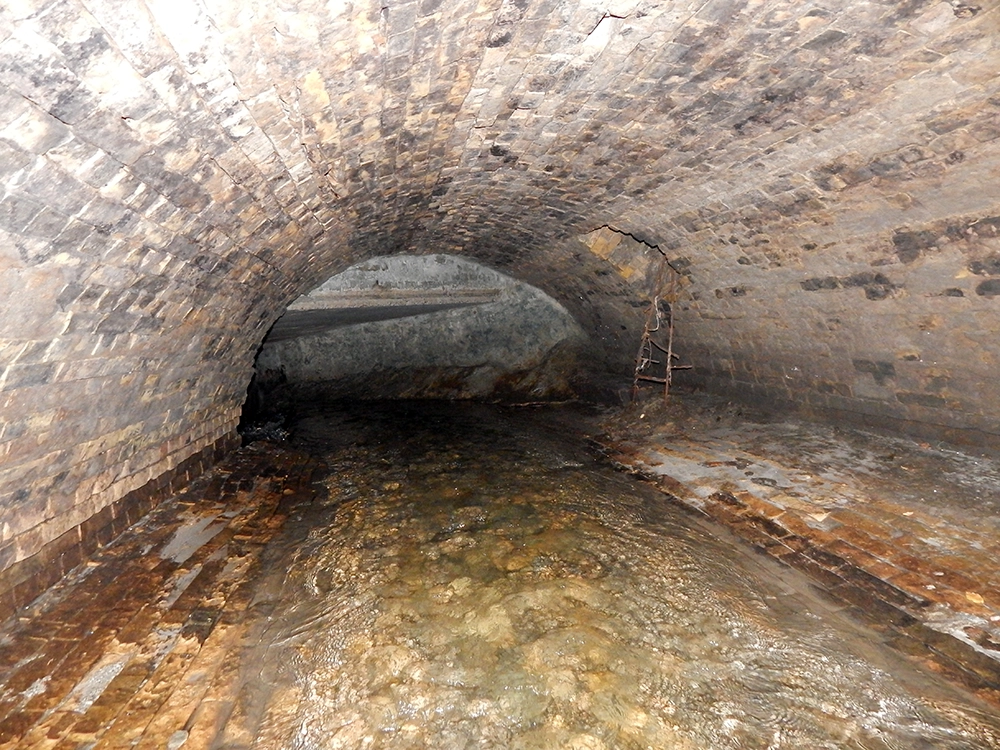
Conclusion
The impression of this place is instantaneous – one only has to step into the collector, especially in the part where the Kiyanka and Glubochitsa beds converge, forming a kind of underground “hall”. Here a unique world opens before your eyes, which is difficult to cover in one visit.
Three routes, three tunnels, three completely different sensations – and each of them is worthy of separate attention. You want to come back here again and again, because each turn and section of the path opens something new.
The collector was built in different historical periods, and you can feel it at every step: every 100-200 meters is like a new underground adventure, with different architecture, height, width and even character – from spacious halls to narrow passages with unexpected obstacles.

